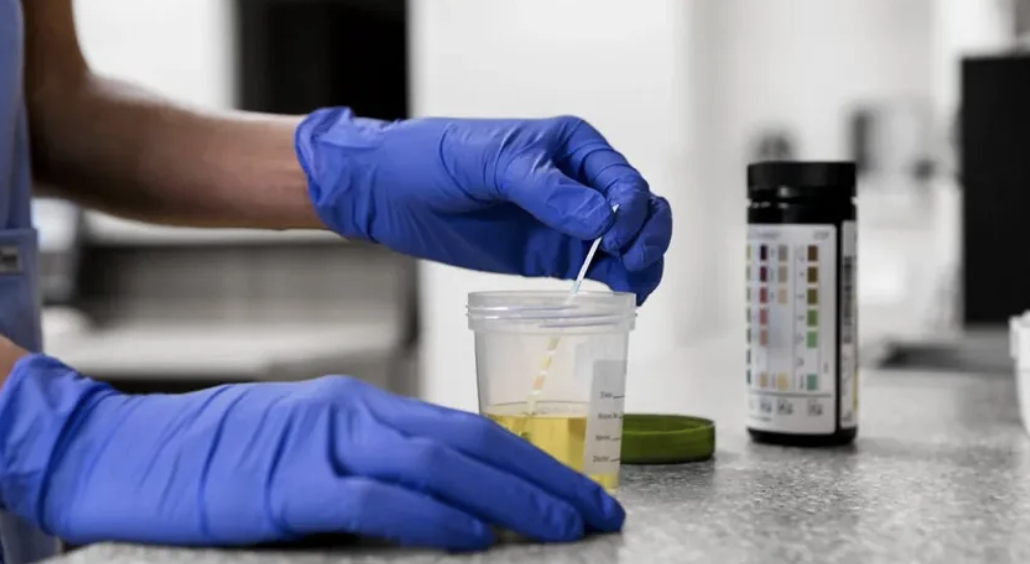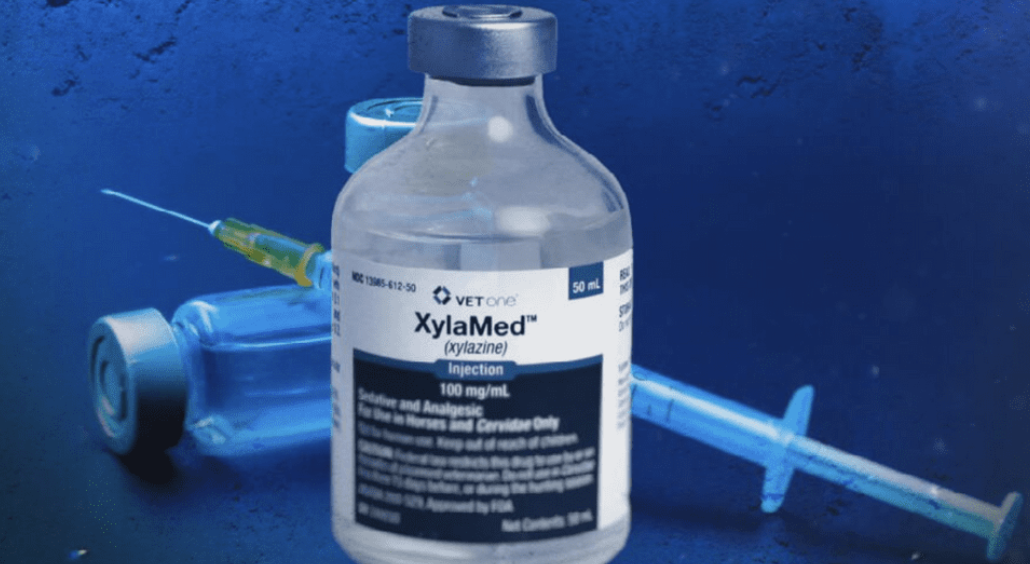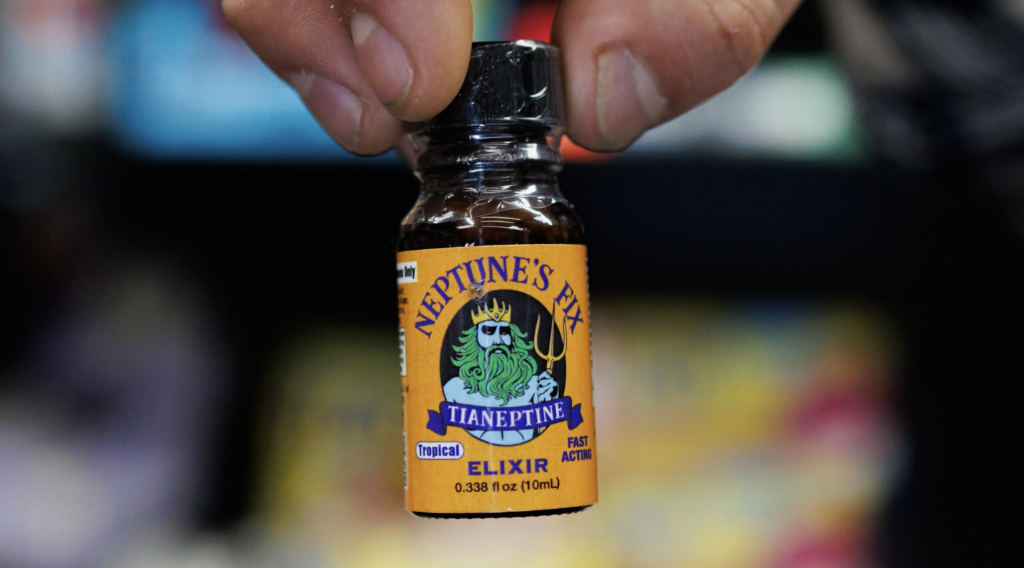Suboxone detox involves gradually eliminating Suboxone from your body to transition to a drug-free state. This process, important for those moving off medication-assisted treatment, requires medical supervision to manage withdrawal symptoms and ensure safety. In this article, we will outline what Suboxone detox entails, including the timeline, symptoms, and necessary support for a successful recovery.
Key Takeaways
- Suboxone detox involves a medically supervised tapering process to safely eliminate buprenorphine and naloxone from the body, preparing individuals for drug-free recovery.
- Withdrawal symptoms during Suboxone detox range from physical discomfort to psychological challenges, with a timed progression that necessitates comprehensive support and management strategies.
- Post-detox, ongoing engagement in recovery care, including therapy and support groups, is essential for addressing cravings and preventing relapse.
What is Suboxone detox?
Suboxone detox is the process of eliminating Suboxone—comprising buprenorphine and naloxone—from the body. It’s a crucial step for those looking to transition from medication-assisted treatment (MAT) to a drug-free recovery. Detox involves tapering off Suboxone doses to manage side effects and prepare the body for complete abstinence.
Understanding that detox differs from treating opioid addiction is crucial, as detox addresses the physical component while treatment supports long-term recovery. Addiction treatment focuses on long-term recovery strategies, while detox serves as a transitional phase to minimize withdrawal symptoms and prepare individuals to treat opioid dependence and subsequent steps in their recovery journey. Due to the complexities involved, medical supervision is necessary to ensure safety and efficacy during detox.

Why do people need Suboxone detox?
People need Suboxone detox for various reasons:
- Transitioning from medication-assisted treatment to a drug-free recovery often occurs when individuals feel ready to live without medication support.
- Experiencing side effects from long-term Suboxone use, prompting the need to taper off under medical supervision.
- Misuse or dependency on Suboxone itself, often referred to as Suboxone addiction, can also necessitate detox under professional care.
Switching to a different medication or treatment program is another common reason for detox. For instance, some individuals may find that a different medication better suits their needs or that their current program isn’t as effective as it once was. Regardless of the reason, detoxing should be done under clinical direction to minimize risks and ensure a smooth transition.
Attempting detox prematurely or without proper support can lead to significant complications. The risks include severe withdrawal symptoms, relapse, and even overdose. Approaching detox with a well-thought-out plan and professional guidance is vital to minimize risks.
How Suboxone works in the body
Suboxone is composed of two primary components: buprenorphine and naloxone. Buprenorphine is a partial opioid agonist, which means it activates opioid receptors in the brain but to a much lesser degree than full agonists like heroin or methadone. Naloxone, on the other hand, is an opioid antagonist that blocks the effects of opioids and is included to prevent misuse.
The half-life of Suboxone is relatively long, which means suboxone stays in the body longer and can affect the detox timeline. This long-acting nature of buprenorphine can lead to a more prolonged but generally milder withdrawal experience compared to full opioid agonists. However, it also means that physical dependence on Suboxone can develop over time, necessitating a carefully managed detox process.
Knowing how Suboxone functions in the body helps in anticipating detox challenges. The prolonged presence of buprenorphine can extend withdrawal symptoms, necessitating a comprehensive plan and medical support.
What to expect during Suboxone detox
The detox process from Suboxone involves both physical and psychological challenges. These can range from mild discomfort to severe distress, depending on the individual’s health, duration of Suboxone use, and dosage. It’s an uncomfortable process that requires close supervision and a robust support system to navigate successfully.
Understanding the expected withdrawal timeline, common withdrawal symptoms, and their severity can help prepare you for the detox journey. Every phase of detox comes with unique challenges that require specific management strategies.
Suboxone detox timeline
The timeline for Suboxone detox varies based on several factors, including dosage, duration of use, and individual metabolism. Generally, withdrawal symptoms begin within the first 24 to 48 hours after the last dose of Suboxone and peak around the 72-hour mark. During this initial phase, individuals may experience intense physical symptoms such as chills, nausea, and muscle aches, which can be part of the Suboxone withdrawal timeline.
Most physical symptoms diminish significantly within about a month, although psychological symptoms like depression and intense cravings can persist longer. Around the two-week mark, depression often becomes the dominant symptom, and cravings can continue to be a challenge even after a month. The extended timeline highlights the importance of ongoing support and effective management strategies.
Common withdrawal symptoms
Withdrawal from Suboxone can result in a range of physical symptoms, including suboxone withdrawal:
- chills
- nausea
- vomiting
- muscle aches
- digestive issues such as diarrhea and stomach cramps
These physical symptoms, although uncomfortable, are generally milder than those experienced during full Opioid withdrawal.
Psychological symptoms are equally challenging and can include anxiety, depression, and intense drug cravings. These common symptoms, along with the most common psychological symptoms, severe symptoms, and substance use disorder, often require additional support through counseling or effective medication to manage effectively.
Having a comprehensive therapeutic support plan is vital due to the combination of physical and psychological symptoms.
Severity and duration
The severity and duration of withdrawal symptoms can vary greatly depending on individual factors such as length of Suboxone use and dosage. Long-term users are likely to experience more severe and prolonged withdrawal symptoms compared to those who have used Suboxone for a shorter period. Physical symptoms are most intense within the first 72 hours but can persist for up to a month.
Psychological symptoms, particularly depression and cravings, can linger for much longer. Some individuals may experience withdrawal symptoms post-acute withdrawal syndrome (PAWS), where symptoms extend for months or even years. It emphasizes the need for a long-term recovery plan to manage ongoing challenges.
Is Suboxone detox safe?
Quitting Suboxone cold turkey is generally not recommended due to the severe withdrawal symptoms and high risk of relapse. Stopping suboxone is best approached with a gradual tapering process under clinical supervision to mitigate these risks. Special populations, such as pregnant individuals, adolescents, or those with co-occurring mental health conditions, require tailored approaches and additional care.
Medical supervision is crucial for ensuring a safe detox process. A controlled tapering schedule allows for the gradual reduction of Suboxone doses, minimizing withdrawal symptoms and preventing severe complications. This approach is particularly important for those with a history of substance abuse or those at high risk of relapse.
Relapse and overdose are significant risks after quitting Suboxone without a safety plan. The body’s tolerance to opioids decreases during detox, making individuals more susceptible to overdose if they relapse. A comprehensive safety plan, incorporating ongoing support and monitoring, is crucial for a successful detox to address suboxone addiction.
Methods of Suboxone detox
Detoxing from Suboxone can be approached through various methods, each with its own protocols and considerations. The choice of method depends on individual circumstances, including the severity of dependence, overall health, and available support systems. The primary methods include tapering under medical supervision, at-home detox (not recommended without support), and inpatient or outpatient medical detox programs.
Knowing these methods and their implications aids individuals in making informed decisions about their detox journey. Each method has its benefits and potential risks, so choosing one that aligns best with individual needs and circumstances is essential.

Tapering under medical supervision
Tapering under medical supervision involves:
- Gradually reducing Suboxone doses over weeks or months.
- Minimizing withdrawal symptoms.
- Allowing the body to adjust slowly to lower levels of the medication while taking suboxone.
- Following taper schedules that can vary based on individual needs and provider recommendations.
Medications such as clonidine or hydroxyzine may be used to support the tapering process and ease withdrawal symptoms. This approach is often conducted in a controlled environment with regular monitoring by healthcare professionals to ensure safety and effectiveness.
At-home detox (not recommended without support)
At-home detox is generally not recommended without proper support due to the high risks involved. Unmanaged withdrawal symptoms can lead to severe medical complications and increase the likelihood of relapse.
Having a robust support system and access to medical care is essential for anyone attempting at-home detox. Absent these, the process can be extremely challenging and dangerous. Thus, seeking professional guidance and support is advisable even when considering at-home detox.
Inpatient or outpatient medical detox programs
Inpatient medical detox facility programs offer:
- A structured environment with 24/7 medical support, ideal for individuals with severe dependence or co-occurring mental health conditions
- Constant monitoring
- Immediate medical intervention if needed
- A controlled setting that minimizes the risk of relapse through medically supervised detox at a treatment facility
Outpatient programs, on the other hand, offer more flexibility and are less intensive. They allow individuals to continue with their daily responsibilities while attending regular medical check-ups and counseling sessions.
Both inpatient and outpatient programs have their own sets of benefits, and the choice depends on individual needs and circumstances.
Managing withdrawal symptoms during Suboxone detox
Managing withdrawal symptoms effectively requires a combination of lifestyle strategies and holistic approaches. These include:
- Staying hydrated
- Maintaining a balanced diet
- Getting regular exercise
- Ensuring adequate rest
These practices can significantly ease physical symptoms.
Holistic therapies like cognitive-behavioral therapy (CBT), mindfulness practices, and peer support can manage psychological symptoms. Non-opioid medications such as clonidine or hydroxyzine may also be prescribed to alleviate specific symptoms. These combined strategies can make the detox process more manageable and increase the chances of a successful recovery.
Suboxone detox vs. Suboxone treatment
The goals of Suboxone detox and Suboxone treatment are fundamentally different. Detox aims to stop Suboxone use altogether, preparing individuals for a drug-free recovery. In contrast, Suboxone treatment focuses on stabilizing opioid recovery and managing cravings through ongoing medication-assisted treatment (MAT).
Detox isn’t the right choice for everyone in recovery. MAT has proven benefits and shouldn’t be stopped prematurely. The decision to detox should involve consultation with healthcare professionals, considering individual circumstances and recovery goals.

What happens after Suboxone detox?
After Suboxone detox, continued engagement in recovery care is crucial. This includes therapy, support groups, and case management to address ongoing psychological cravings and challenges. Developing coping strategies and a strong support network is crucial for maintaining sobriety and addressing underlying issues that contributed to substance use.
Relapse prevention planning is also vital. Identifying triggers, developing coping strategies, and having emergency plans in place can help manage the risk to prevent relapse. Harm reduction strategies are important for individuals at high risk of returning to opioid use disorder.
Is Suboxone detox right for you?
Assessing readiness for Suboxone detox involves asking key questions: Why are you considering detox? Are you under clinical guidance? Do you have a support system? These questions help determine if detox is the right step at this stage in your recovery journey.
It’s highly recommended to speak with an addiction specialist or health professional before making any decisions. Professional guidance can provide valuable insights and help create a personalized plan that aligns with your recovery goals at American Addiction Centers.
Bottom Line: Suboxone detox and safe recovery
Suboxone detox is a challenging but achievable step towards overcoming opioid addiction. It’s crucial to approach this process under professional guidance to ensure safety and efficacy. Personalized care plans that include medical supervision, lifestyle strategies, and holistic approaches can significantly enhance the detox experience and support long-term recovery.
Remember, detox treatment is just one part of the recovery journey. Ongoing support, therapy, and a strong treatment team are essential for maintaining sobriety and preventing relapse. Explore supportive, nonjudgmental treatment options that can provide the comprehensive care you need to succeed.
FAQs about Suboxone detox
How long does Suboxone stay in your system?
Suboxone may remain in your system for up to two weeks, influenced by factors such as dosage, duration of use, and your individual metabolism. It's important to consider these variables for personalized timelines.
Can you detox from Suboxone at home?
Detoxing from Suboxone at home is possible, but it is not advisable without professional support, as unmanaged withdrawal symptoms can pose significant risks and increase the likelihood of relapse. Seeking medical assistance can ensure a safer and more effective detox process.
What is the safest way to quit Suboxone?
The safest way to quit Suboxone is through a medically supervised tapering process, allowing for a gradual reduction in dosage to minimize withdrawal symptoms. Engaging with a healthcare professional is crucial for a safe cessation plan.
What is the success rate of detoxing off Suboxone?
The success rate of detoxing off Suboxone is highly variable and largely depends on individual commitment, support systems, and the effectiveness of the treatment plan. Therefore, a tailored approach is essential for better outcomes.
Will insurance cover Suboxone detox?
Insurance often covers Suboxone detox, though the extent of coverage can differ. It is advisable to verify your specific benefits with your insurance provider.
















